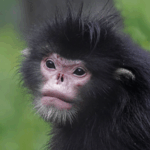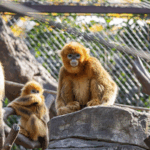Forget diamonds—poop is a conservationist’s best friend! 🐒 At the Guangxi Chongzuo White-Headed Langur National Nature Reserve, scientists are scooping up primate droppings to save one of the world’s rarest monkeys. These cliff-dwelling langurs, with their golden fur and rockstar hairstyles, have bounced back from just 300 individuals in the 1980s to over 1,400 today. But how? Cue the science.
🔬 Researchers track yellowish-brown stains on limestone cliffs (caused by langur poop’s corrosive chemicals) to collect fecal samples. Through DNA sequencing and hormone analysis, they’re decoding:
- Gut health trends 🦠
- Stress levels via cortisol spikes 📈
- Human activity impacts 🚶♂️→🐒
"Elevated stress from tourism or development can lead to chronic issues like skin infections," explains Zhou Chunfang of Guangxi Normal University. By mapping cortisol data, the team designs buffer zones to keep langurs chill—boosting reproduction and survival rates.
This 💩-to-science pipeline proves that even the quirkiest research can drive real change. Next time you hike near Guangxi’s cliffs, remember: those brown stains are hope in disguise. 🌏✨
Reference(s):
White-headed langurs: Why their poop is key to their survival
cgtn.com







